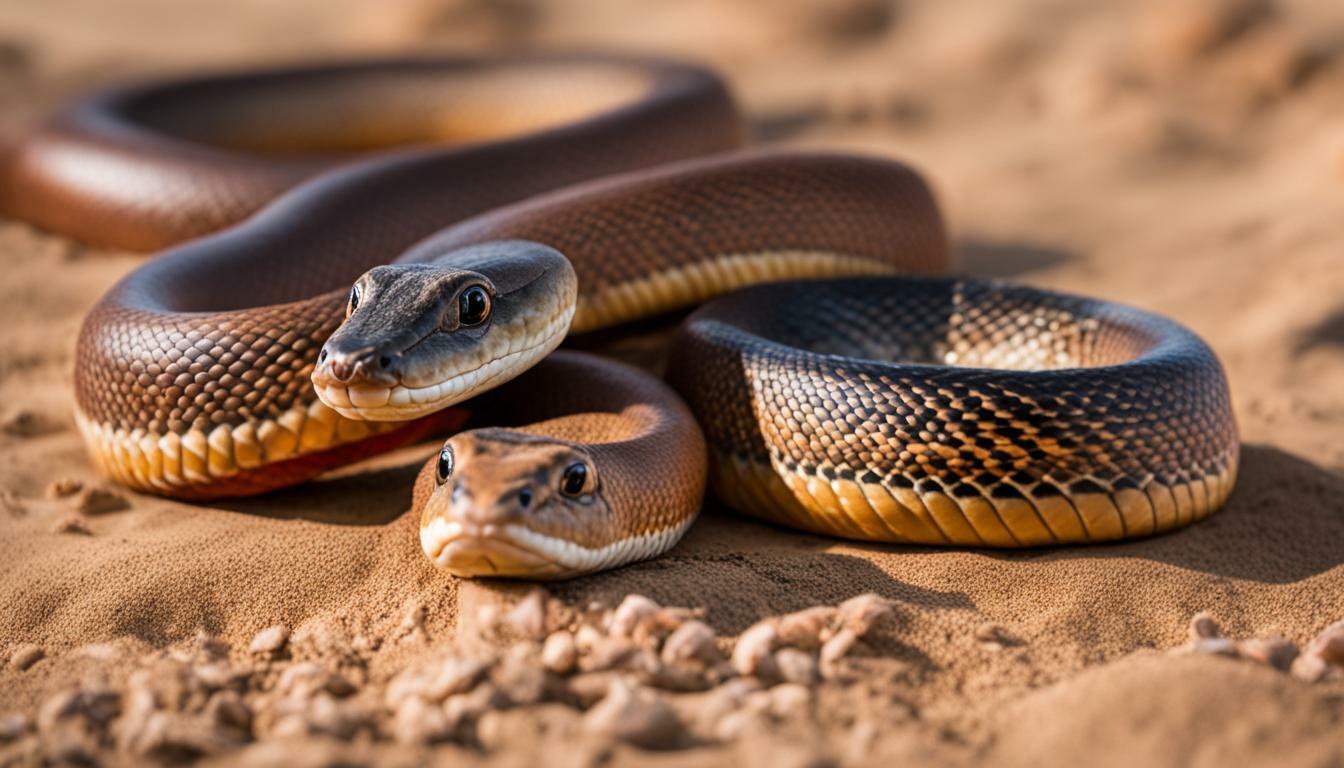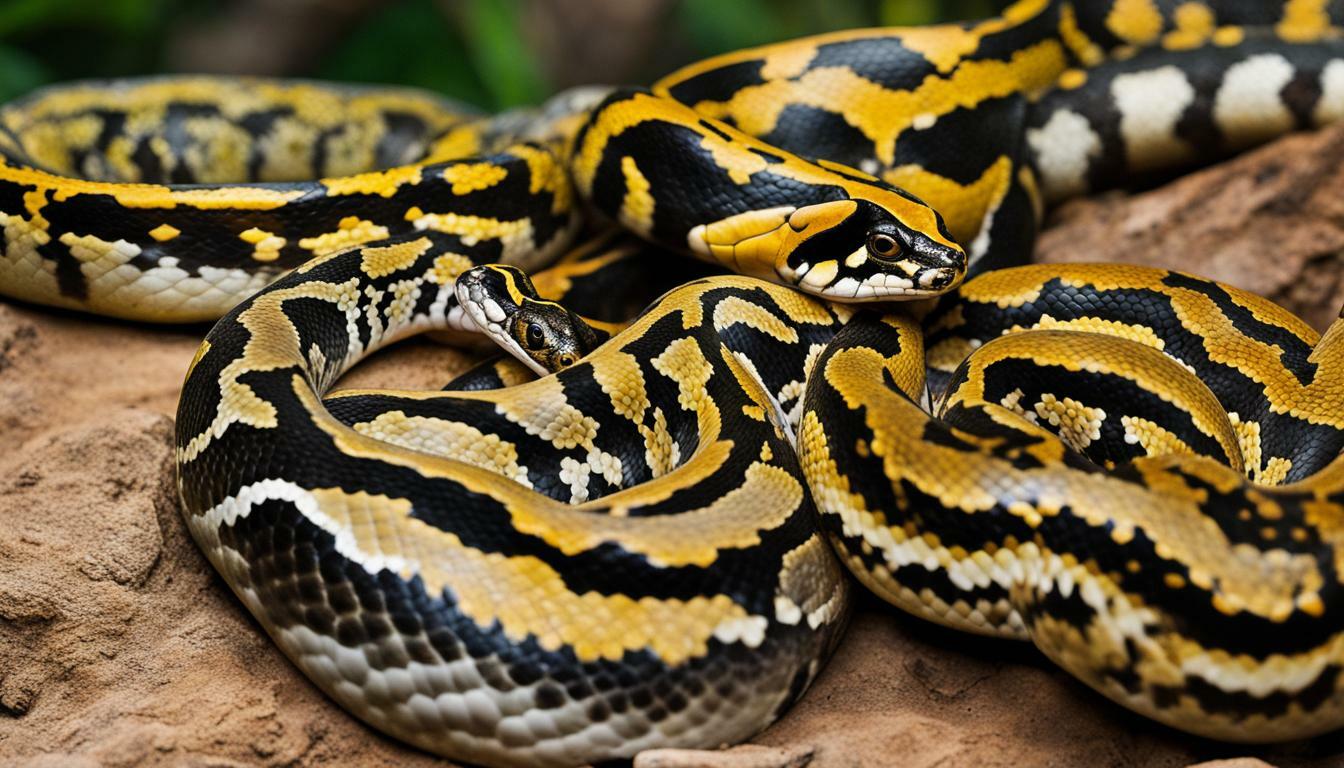Newts and salamanders are small, aquatic creatures that belong to the same family of amphibians. They may seem similar, but there are distinct differences between them. It is important to understand these differences to gain a better understanding of their unique characteristics and traits.
In this section, we will delve into the differences between newts and salamanders, exploring their individual characteristics and features that set them apart.
Key Takeaways:
- Difference Between Newts and Salamanders
- Newts and salamanders differ in many ways, including their physical characteristics, habitats, and lifecycles
- Understanding these differences can help in identifying newts and salamanders in the wild
Habitat and Lifecycles
Newts and salamanders share similar habitats and lifecycles, but there are also distinct differences. There are over 500 different known species of salamanders and newts, each with unique characteristics and traits.
One major difference between newts and salamanders is that newts spend most of their lives on land, while salamanders are primarily aquatic. However, some species of newts do spend time in the water.
There are three main types of newts: terrestrial, semi-aquatic, and fully aquatic newts. Terrestrial newts live entirely on land, while semi-aquatic newts divide their time between land and water. Fully aquatic newts spend their entire lifecycle in the water.
Salamanders, on the other hand, can be divided into four main groups: lungless salamanders, mole salamanders, newt-like salamanders, and true salamanders. Lungless salamanders are entirely terrestrial and do not have lungs, obtaining oxygen directly through their skin. Mole salamanders are similar to true salamanders but have shorter, chunkier bodies. Newt-like salamanders are fully aquatic, with a similar appearance to newts. True salamanders are typically terrestrial, but many species also spend time in the water.
Despite their differences, newts and salamanders share many similarities in their lifecycles. Both types of amphibians lay their eggs in the water, and the larvae hatch and undergo metamorphosis before becoming adults.
Overall, while newts and salamanders may have different types and levels of aquatic or terrestrial lifestyles, they are similar in their lifecycle and stages of development.
Newt and Salamander Identification: Examining Unique Features
One of the easiest ways to distinguish between newts and salamanders is by examining their physical characteristics. While both newts and salamanders have long, slender bodies and short legs, there are several unique features that set them apart.
Firstly, newts have dry, rough skin while salamanders have moist, smooth skin. This difference is due to the fact that newts spend much of their time on land, while salamanders live in water. Additionally, newts have a distinctive V-shaped ridge between their eyes, which salamanders lack.
Another distinguishing feature is the presence of external gills in newts during their larval stage. These gills, which resemble feathers, can be seen on the sides of a newt’s head. In contrast, salamanders do not have external gills and instead use their skin to absorb oxygen.
Finally, newts have the ability to regenerate body parts, including limbs and even parts of their spinal cord. This unique adaptation allows them to survive in harsh environments and avoid predators.
By examining these unique features, we can easily identify whether we are looking at a newt or a salamander.
Behavior and Adaptations
When it comes to behavior and adaptations, newts and salamanders differ in several ways. Newts are more terrestrial than salamanders, spending most of their time on land instead of in water. Salamanders, on the other hand, are almost entirely aquatic, with some species never leaving the water throughout their entire lifespan. This difference in habitat is reflected in their physical characteristics, with newts possessing rougher skin and more developed lungs to help them survive on land, while salamanders have smoother skin and gills to extract oxygen from water.
Another notable difference between newts and salamanders is their reproductive behavior. Newts tend to breed in aquatic habitats, laying their eggs individually on leaves or other aquatic plants. Once hatched, the larvae possess external gills and live in the water until they metamorphose into their adult form. Salamanders, on the other hand, lay their eggs in clusters in the water. When the eggs hatch, the larvae have internal gills and are entirely aquatic until they mature into adults.
When it comes to adaptations, both newts and salamanders have unique features that allow them to survive in their respective environments. Newts, for instance, have a toxin in their skin that helps fend off predators. This toxin can also be secreted through their skin when threatened, making predators think twice before attacking. Salamanders, meanwhile, have a remarkable ability to regenerate lost limbs. This adaptation allows them to escape from predators or heal injuries sustained during territorial disputes.
Newt vs Salamander Comparison
While newts and salamanders share several characteristics, including similar habitats and lifecycles, their differences are ultimately what set them apart. Newts are better suited to life on land, with rougher skin and more developed lungs to help them breathe. Salamanders, on the other hand, are perfectly adapted to life in the water, with smoother skin and gills that allow them to extract oxygen from their environment.
Furthermore, the reproductive behavior of newts and salamanders differs significantly, with newts laying their eggs individually and salamanders laying their eggs in clusters. Finally, both newts and salamanders have unique adaptations that allow them to survive and thrive in their respective habitats, whether it is a toxin in their skin or the ability to regenerate lost limbs.
These differences between newts and salamanders make them both fascinating and unique creatures that are worth exploring in more detail.
Conclusion
In conclusion, understanding the difference between newts and salamanders is crucial to appreciating the unique beauty of each creature. Despite sharing similar habitats and lifecycles, their physical characteristics and behaviors differ significantly.
By examining their distinct features and adaptations, we gain a deeper appreciation for the fascinating world of amphibians. Whether it’s their colorful skin or their remarkable ability to regenerate lost limbs, newts and salamanders are captivating creatures that inspire awe and admiration.
Difference Between Newts and Salamanders
Remember, the key difference between newts and salamanders lies in their physical characteristics, behavior, and adaptations. While newts have rougher skin and are more aquatic, salamanders have smoother skin and tend to live on land.
Whether you’re a nature lover or a scientist, understanding the difference between newts and salamanders is an important step in appreciating the diversity of life on our planet.
FAQ
Q: What is the main difference between newts and salamanders?
A: Newts and salamanders are both types of amphibians, but the main difference lies in their life cycle. Newts spend part of their life on land as adults, while salamanders primarily live in water throughout their lifespan.
Q: Can newts and salamanders live together in the same habitat?
A: It is not recommended to keep newts and salamanders together in the same habitat. They have different environmental requirements and may compete for resources, leading to stress or aggression.
Q: How can I identify whether I am looking at a newt or a salamander?
A: One distinguishing feature is the presence of external gills in newts during their aquatic stage, which salamanders do not have. Additionally, newts often have bright, vibrant colors compared to the more subdued coloration of many salamander species.
Q: What kind of behavior can I expect from newts and salamanders?
A: Newts are known for their ability to regenerate limbs, while salamanders have a unique courtship dance. Both exhibit various behaviors such as foraging, hiding, and climbing, but the specifics can vary between species.
Q: Are newts and salamanders harmful to humans?
A: Generally, newts and salamanders are not harmful to humans. However, some species may produce skin toxins as a defense mechanism. It is important to handle them with care and practice good hygiene after contact.
 Skip to main content
Skip to main content


